What Are The Different Types Of Cargo Ships?
Cargo ships are specifically engineered to accommodate various types of goods essential for global trade. They range from colossal vessels carrying standardized containers to more petite bulk carriers designed for smaller ports. This section highlights the primary categories of these vessels, crucial for the intricate web of international supply chains.
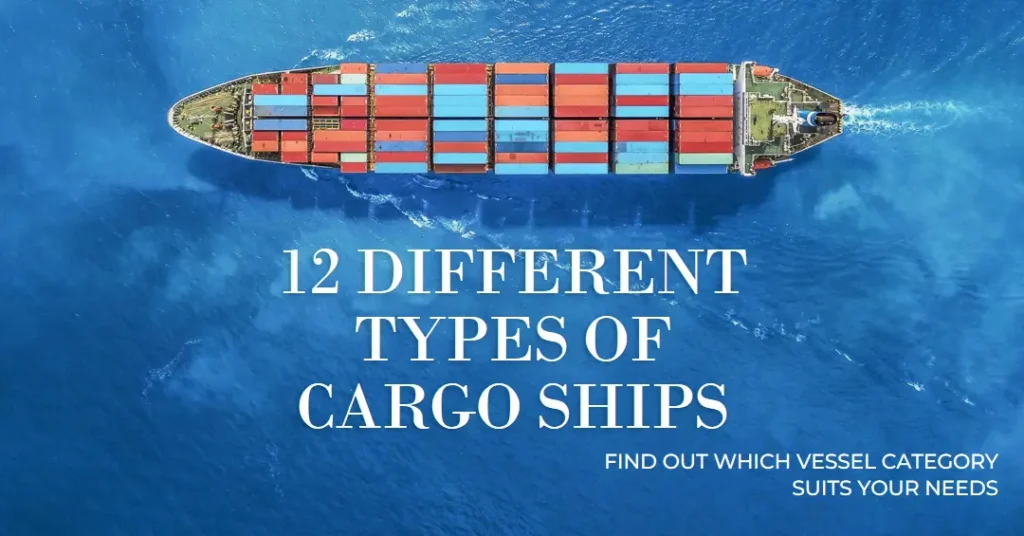
Container Ships
These are constructed to carry standardized containers, efficiently loadable and stackable aboard the vessel for international shipment. Categorized by their cargo capacity in twenty-foot equivalent units (TEUs), the largest of these can carry more than 20,000 TEUs. These ships possess advanced technology for safe, economical good transportation, parallel to intermodal systems, which shunt goods from ships to other transport forms without reloading.
Multipurpose Cargo Vessels
Known for their adaptability across varied cargo types, these ships serve ideal for smaller shipments and less-equipped ports. Multipurpose vessels range in size and are equipped with stowage options and onboard handling equipment, permitting a diverse cargo mix onboard.
Liquid Bulk Carriers (Tankers)
Tankers are specially built to carry large volumes of liquid, with a sophisticated design featuring multiple compartments and high-grade materials to avert contamination. They range from small carriers to vast supertankers that can move roughly two million barrels of oil. Tanker categories include oil tankers, chemical tankers, and carriers for Liquid Natural Gas (LNG) and Liquefied Petroleum Gas (LPG), forming a key part of numerous industrial supply lines.
Bulk Carriers for Dry Goods
Bulk carriers are dedicated to conveying non-liquid, unpackaged materials like grains and minerals. Unlike container ships and tankers, they have open holds equipped with handling equipment such as cranes and conveyor systems. From smaller Handysize to Panamax and gargantuan Capesize vessels, they vary in size and sometimes feature a double hull for increased stability during transit.
Refrigerated Vessels (Reefer Ships)
Designed to transport temperature-sensitive freight, reefer ships keep perishables like produce and pharmaceuticals in climate-controlled environments throughout their journey. Advanced technology allows for precise temperature and humidity control, proving indispensable for preserving the quality of goods with a limited shelf life.
Roll-On/Roll-Off Ships (Ro-Ro)
Ro-Ro ships transport wheeled cargo, such as vehicles, that can be driven directly onto the ship, bypassing the need for lifting machinery. Signature characteristics include ramps, open decking, and stowage systems to secure vehicles, along with ventilation systems to prevent harmful gas buildup. Primary uses include passenger ferry services and military logistics.
What is a Container Ship?
Container ships are specialized vessels designed to transport enormous quantities of goods in an organized and efficient manner. They are equipped to carry cargo which is securely stored in standardized shipping containers. These containers are rectangular steel boxes that come in internationally recognized sizes, allowing for seamless handling across different transportation modes, including ships, trains, and trucks.
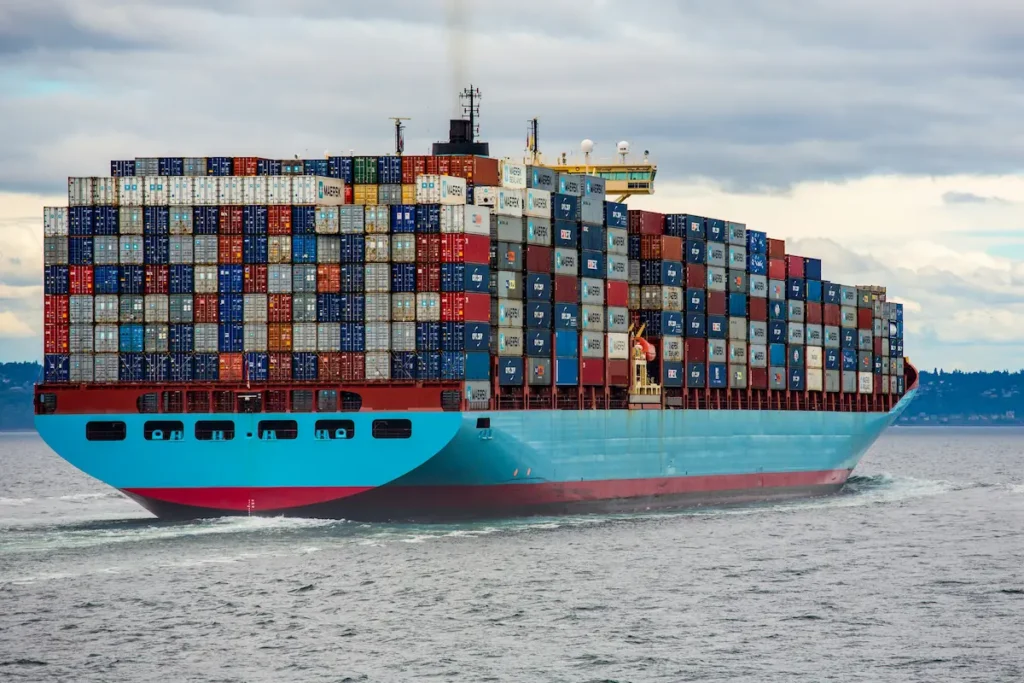
Key Characteristics of Container Ships:
- Standardized Containers: The use of uniform intermodal containers allows for the efficient transfer of goods from shipping to rail or road transport.
- Capacity: Container ships vary in size, measured by Twenty-foot Equivalent Units (TEU), which is a standard measure based on a twenty-foot-long container.
- Stacking: Containers are stacked on top of each other in rows across the ship’s deck and in holds, maximizing space utilization.
- Types: There are several types of container ships, such as Feeder vessels for short-sea connections and Ultra Large Container Vessels (ULCVs) for long-haul routes.
Container Ship Advantages:
- Speed: Containerization reduces shipping time by allowing goods to be loaded, transported, and unloaded efficiently.
- Safety: Containers provide secure, weatherproof, and lockable storage for a wide variety of goods.
- Cost-Effectiveness: By standardizing the cargo handling process, container ships lower transportation costs.
Overall, container ships play a critical role in global trade, enabling the movement of consumer goods, electronics, clothing, and various other products across the world’s oceans.
What is a General Cargo Vessel?
A General Cargo Ship, also referred to as a “freighter,” is a versatile merchant vessel designed to transport diverse types of goods. Unlike specialized ships which are built for specific cargo such as oil tankers or bulk carriers, general cargo ships carry a variety of goods.
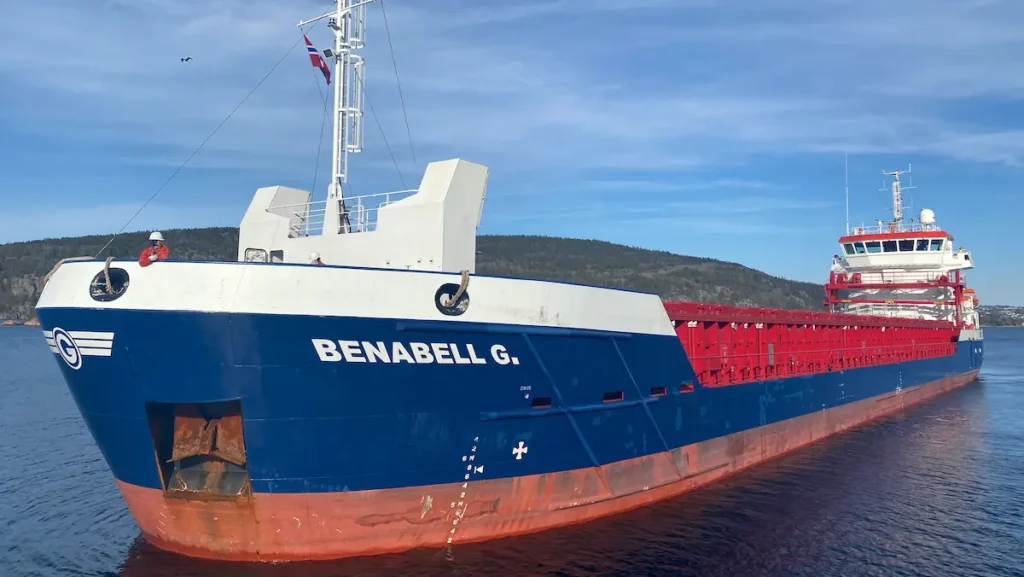
- Cargo Holds:
- Central storage areas within the ship
- Can be divided into different compartments
- Facilitate the carriage of different types of merchandise
Handling Equipment:
- Often equipped with onboard cranes or derricks
- Used for loading and unloading cargo
- Essential for ports lacking shore-based handling facilities
Cargo Types:
- Can carry packaged items such as bags or boxes
- Accommodates heavy machinery and vehicles
- Transports roll-on/roll-off cargo with integrated ramps
Vessel Adaptability:
- Some are fitted with adjustable decks for cargo of varying heights
- May have refrigerated spaces for temperature-sensitive goods
General cargo ships are the linchpins of global trade, capable of delivering assorted merchandise between ports across the world. They may carry cargo on a single deck or multiple decks, and the method of stowing can include strapping, lashing, or shoring to ensure the safe transportation of goods.
These vessels are crucial for logistics and play a vital role in connecting economies. For more information on the characteristics of these vessels, one might consider learning about the types of cargo boats and their characteristics.
What is a Dry Bulk Carrier?
A dry bulk carrier is a specialized maritime vessel designed for the transportation of unpackaged bulk cargo. It refers to solid raw materials that are transported in large volumes directly in the ship’s hold.
These materials typically include items like grain, coal, iron ore, and other similar commodities that do not require packaging or containerization.
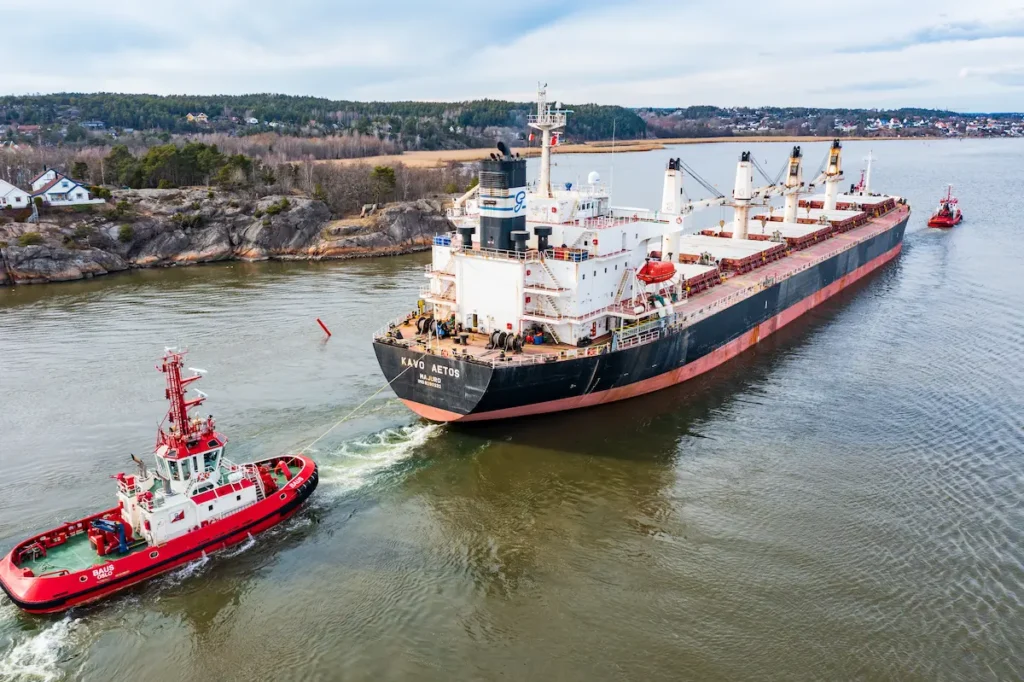
Key characteristics include:
Cargo Capacity: They can range from small to very large sizes, with the smallest known as Handysize, moving up through Handymax, Supramax, and Panamax, to the largest called Capesize vessels that cannot pass through the Panama Canal and must travel around the Cape of Good Hope or Cape Horn.
Unpackaged Materials: Typically carry goods like grains, coal, ore, cement, and other granular materials which are loaded directly into the cargo space without intermediate containment.
Hatch Covers: Possess large hatches on the deck to facilitate loading and unloading of cargo, which can be done by onshore cranes in the absence of onboard equipment on gearless carriers.
Bulkheads and Single Decks: Most have a single deck and possess a series of bulkheads which compartmentalize the hold and provide structural integrity.
Gearless vs Geared: A distinction is made between gearless carriers, which rely on port infrastructure for loading and unloading, and geared ships, which have their own cranes or conveyors.
Understanding the function and variety of dry bulk carriers is essential to grasp the logistics and challenges of seaborne bulk trade. For more detailed information on the types of dry bulk carriers, refer to Maritime Page. To learn about the cargoes typically transported within these vessels, HandyBulk offers insights into dry bulk cargo.
What is a Tanker Ship?
A tanker is a specialized vessel designed to transport bulk liquids such as oil, chemicals, and liquefied gases. Below is a brief description of various types of tankers, each serving a specific segment within the marine transport industry.
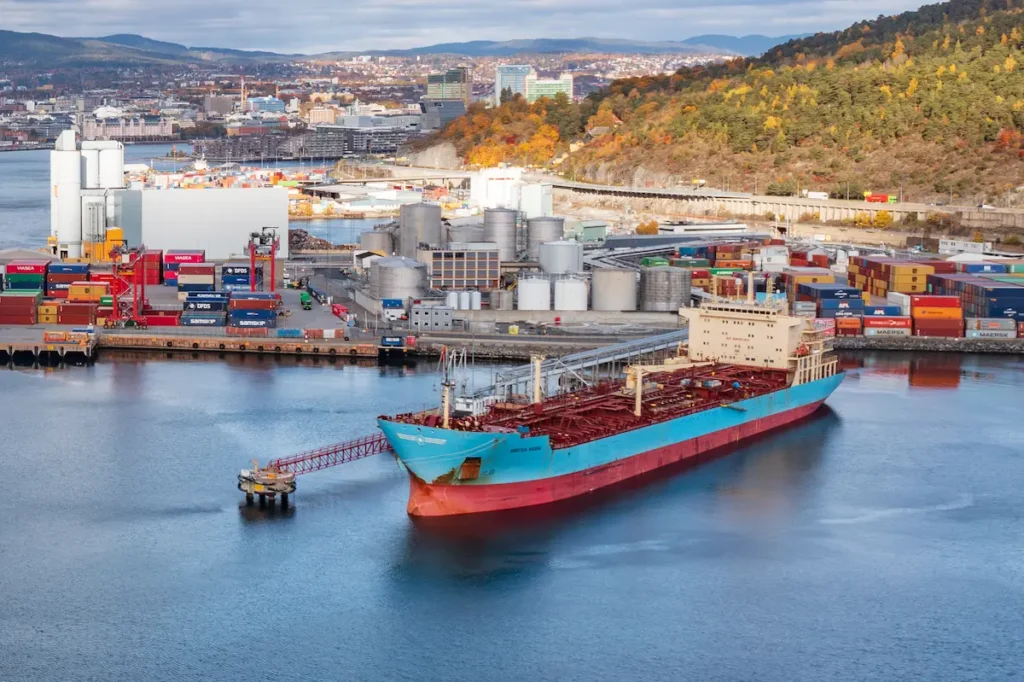
By accommodating different types of liquid cargoes, tankers play an indispensable role in the global economy, ensuring the flow of essential commodities across the world’s seaways. Each tanker type is built with specific features to meet the demands of their cargo, emphasizing safety, environmental protection, and efficiency.
What is a Chemical Tanker?
Chemical tankers are ships created to move various chemical substances in liquid form. They have sophisticated safeguarding measures and tank configurations to safely transport hazardous chemicals.
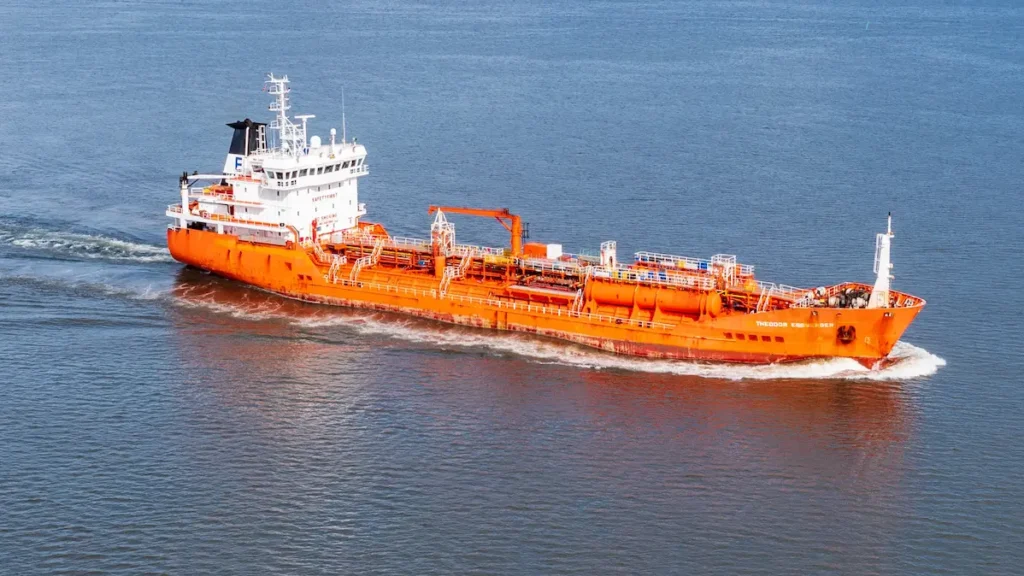
These vessels possess coatings or specially designed tanks to handle the corrosiveness or toxicity of the chemicals they carry.
What is a Gas Tanker?
Gas tankers are designed to transport liquefied gases such as liquefied natural gas (LNG) and liquefied petroleum gas (LPG).
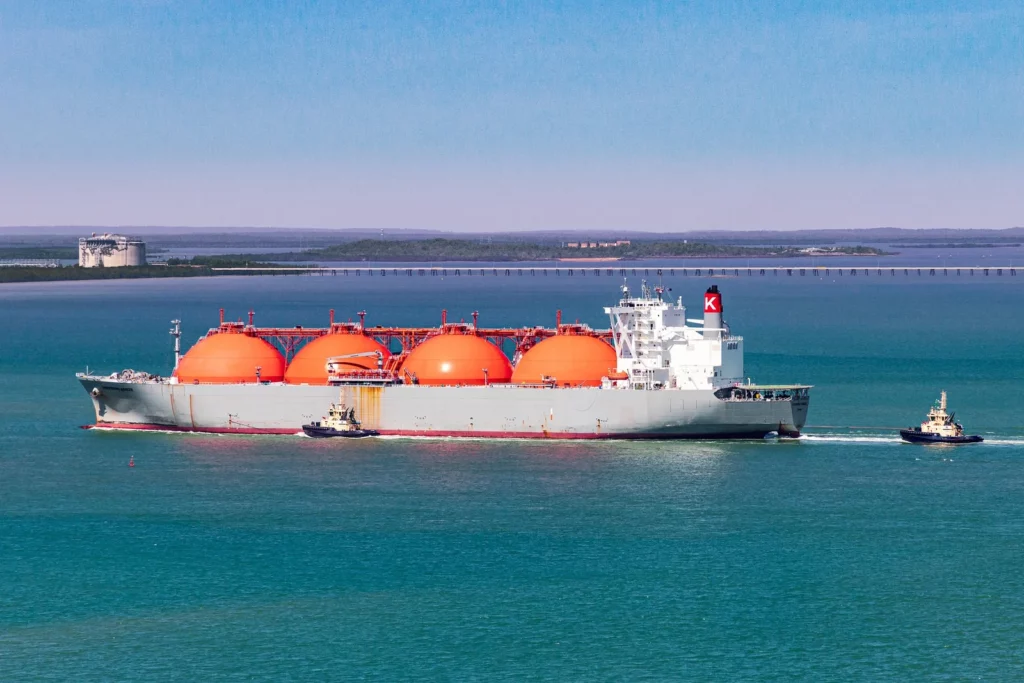
These tankers maintain the gas in a liquid state at low temperatures or high pressures to optimize storage capacity and guarantee transportation safety.
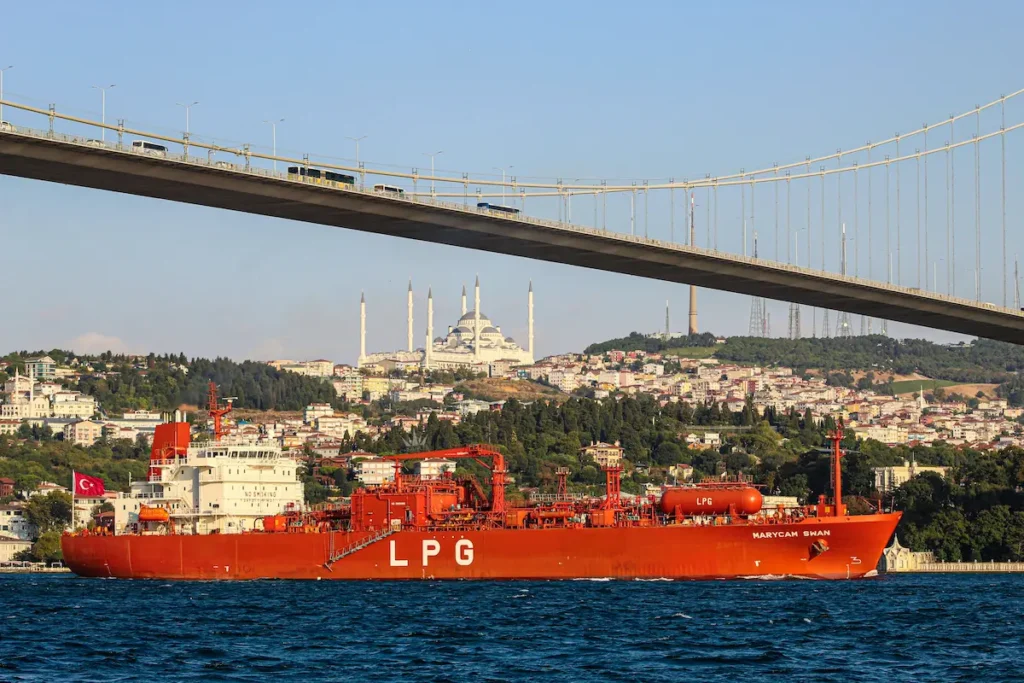
What is a Product Tanker?
Product tankers are vessels that carry refined oil products from petroleum derivatives. These can include gasoline, diesel, kerosene among others.
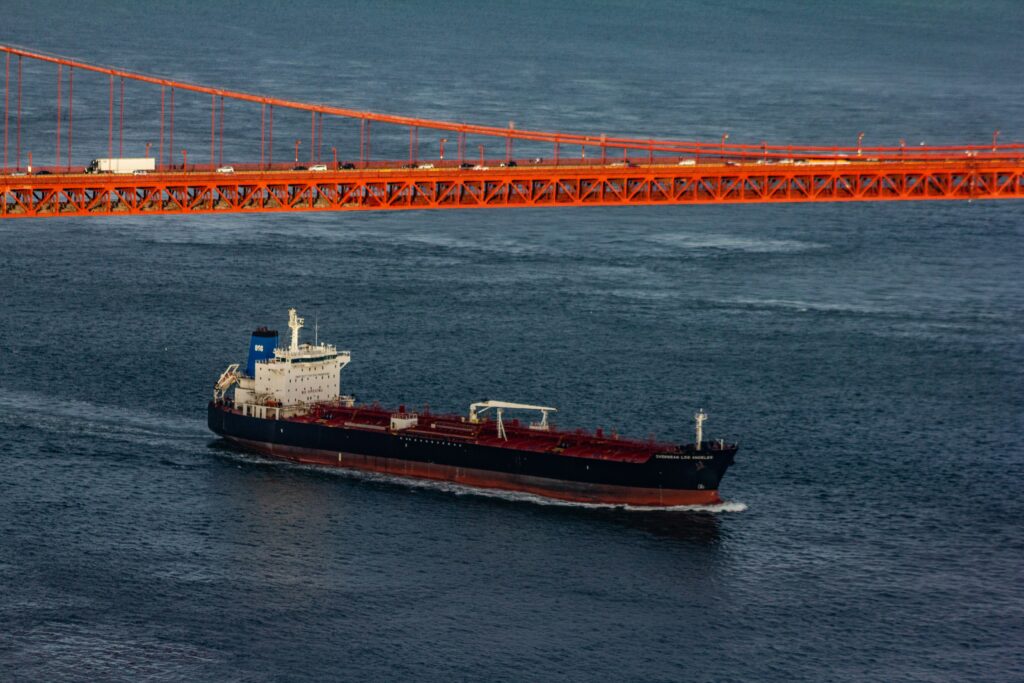
They are often smaller than crude oil tankers and are equipped with an array of tanks to carry different grades of products to their destinations.
What is a Crude Oil Tanker?
Crude oil tankers are large ships tasked with the transport of unrefined crude oil from extraction sites to refineries.
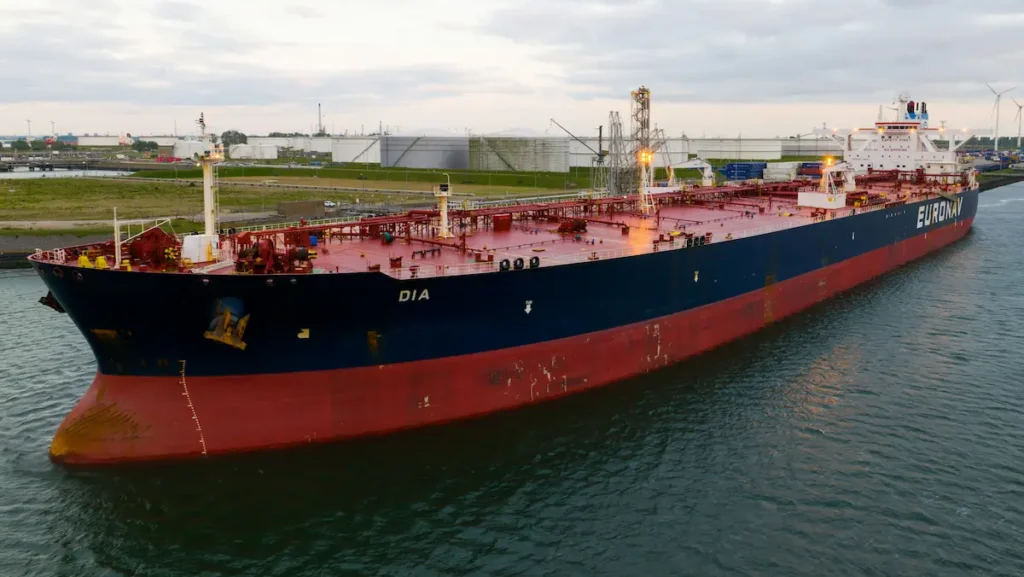
They are constructed with single or multiple cargo spaces and possess the required structural strength to carry large amounts of heavy crude oil across oceans.
What is a Reefer Ship?
Reefer ships are vessels that are specifically outfitted to transport temperature-sensitive cargo, providing refrigerated spaces to maintain the quality of perishables during long voyages.
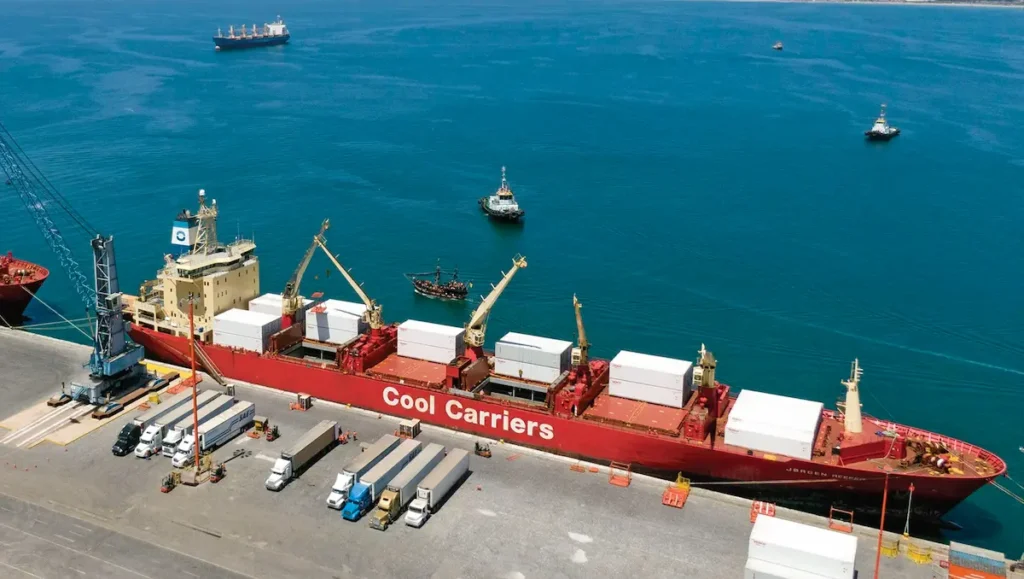
Typically, these ships are utilized for the following items:
- Fruits: Bananas, oranges, and berries
- Meat Products: Beef, poultry, and pork
- Vegetables: Leafy greens, peppers, and roots
- Dairy Products: Cheese, and butter
- Seafood: Fish and shellfish
Characteristics of reefer ships include the following:
- Insulated Compartments: To ensure minimal heat exchange.
- Cooling Systems: Which might be integrated or come in the form of refrigerated containers.
- Temperature Control: Enabling different products to be stored at their optimal temperatures.
- Specialized Handling: To prevent spoilage during loading and unloading.
They are often classified by their carrying capacity and the means by which they stabilize the temperature for their sensitive freight. These ships are critical for global trade, allowing for fresh produce to be available year-round, regardless of the season or geographic limitations of consumer markets.
What is a Roll-On/Roll-Off (Ro-Ro) Ship?
Roll-On/Roll-Off (Ro-Ro) ships are specialized vessels designed for transporting wheeled cargo. They are equipped with built-in ramps that enable vehicles like cars, trucks, trailers, and other heavy machinery to be driven directly onto and off the ship, which streamlines the loading and unloading processes.
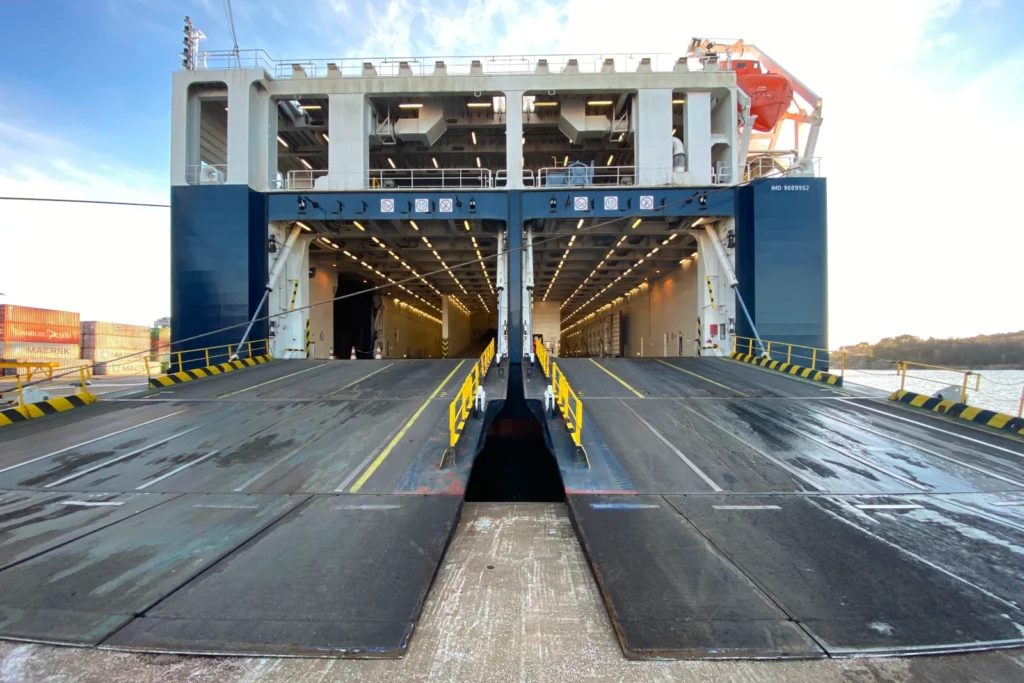
Here are some key characteristics of Ro-Ro ships:
-
Built-in Ramps: Ro-Ro ships have one or more built-in ramps that allow for the direct roll-on and roll-off of cargo.
Types of Cargo: Common cargo includes:
- Passenger vehicles
- Commercial trucks
- Trailers
- Construction machinery
Vessel Types: The fleet includes:
- Pure Car Carriers (PCC)
- Pure Car/Truck Carriers (PCTC)
- ConRo vessels (Container and Roll-On/Roll-Off hybrid)
-
Efficiency in Transport: Ro-Ro vessels provide a more efficient loading method compared to traditional lift-on/lift-off (Lo-Lo) methods since cargo does not require cranes for loading.
Through the incorporation of extensive ramps and sizable storage decks, Ro-Ro ships facilitate the swift and efficient transition of cargo between sea and land transport. This plays a crucial role in global trade and vehicle transport across oceans. For further details on the operational aspects of Ro-Ro ships, consider perusing What are Ro-Ro Ships?.
What is a Multi-Purpose Ship?
Multi-Purpose Ships (MPP), or Multi-Purpose Vessels (MPV), represent a versatile class within the maritime industry. They are engineered to transport a broad array of cargo types, which can include everything from bulk and breakbulk goods to heavy project loads and containers.
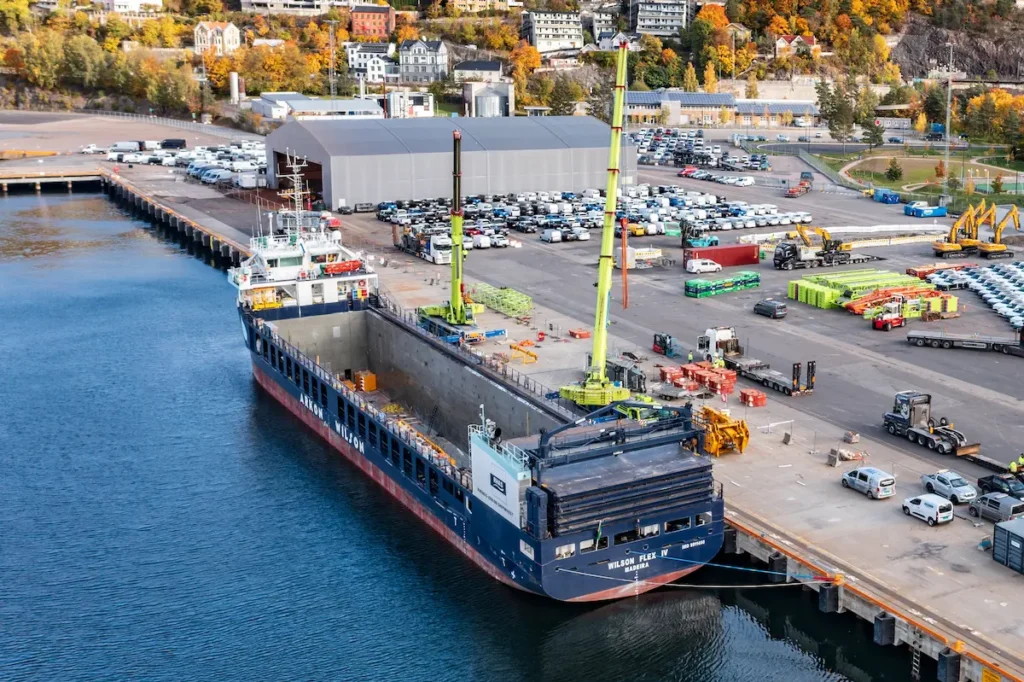
Design and Flexibility:
- Hull Shape: Optimized for stability and to accommodate a variety of cargo forms.
- Cargo Handling Equipment: Often equipped with cranes or other gear to handle various cargoes.
Types of Cargo:
- General cargo
- Containerized goods
- Project and heavy-lift cargo
Classification of Multi-Purpose Vessels:
- Vessels with cargo gear
- Vessels without cargo gear
- Coastal trade liners
- Sea-river vessels
Advantages:
- Flexibility to operate in different trade routes.
- Ability to adapt to various cargo specifications, enhancing utility.
Operational Considerations:
- They have configurations for different cargo types within a single journey.
- Separate storage systems are maintained to ensure the integrity and safety of the cargo.
By combining the loading capacity for both liquid and dry cargo, multi-purpose ships serve as critical assets for shipping companies to meet diverse shipping needs. Their complex design and operational capabilities necessitate experienced crews to manage the intricate balance of efficiently loading, transporting, and unloading assorted cargoes.
What is a Livestock Carrier Ship?
Livestock carrier ships are specialized maritime vessels designed for the purpose of transporting live animals. These ships are often used to move various types of livestock — such as cattle, sheep, and goats — across the ocean to different markets or farms. These vessels play a pivotal role in the global agricultural and food industries, enabling the trade and export of valuable livestock.
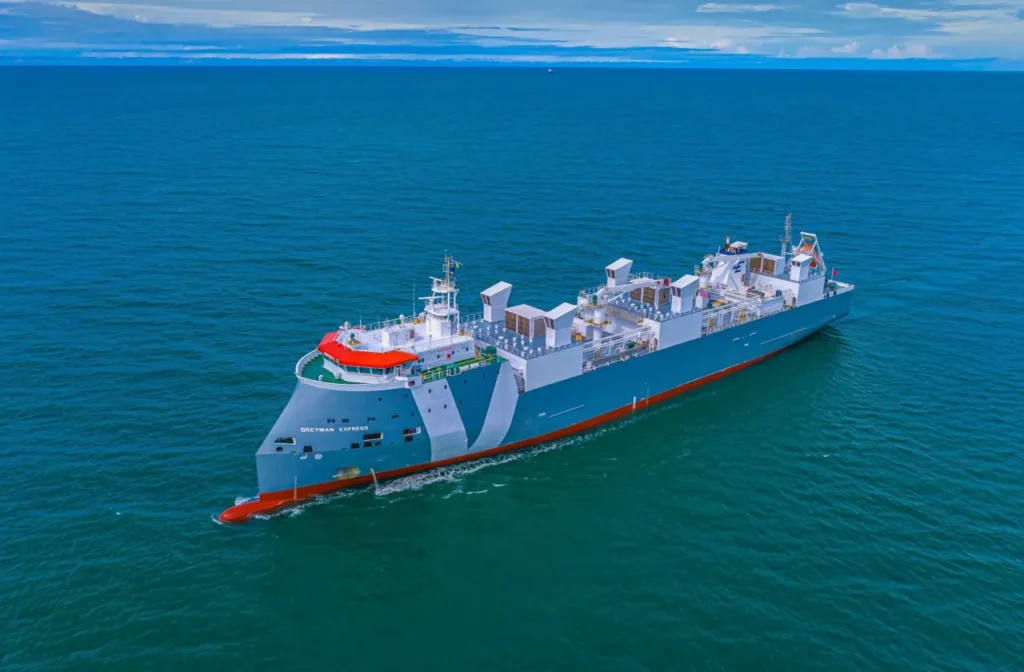
Key features of livestock carriers include:
- Ventilation Systems
Ensuring adequate airflow to keep the animals comfortable and healthy throughout the journey. - Stable Fitting and Pens
Providing secure spaces for the animals to reduce stress and injury during transit. - Specialized Watering and Feeding Mechanisms
Allowing for the consistent nourishment of the animals onboard. - Waste Management Systems
Handling animal waste products efficiently to maintain hygiene standards.
Livestock carriers are often the subject of stringent regulations concerning animal welfare. These ships have to be strategically designed to maximize safety and minimize the risk to their cargo. As a result, they are equipped with various facilities that cater to the well-being of the animals during long sea voyages.
Furthermore, the crews on these vessels are trained to oversee the livestock’s care. They are responsible for feeding the animals, ensuring they are healthy, and responding to any issues that may arise on the journey. Their expertise ensures that livestock arrive at their destination in good condition, ready for the next stage of their journey or for the market.
What is a Heavy-Lift Ship?
Heavy-lift ships are specialized maritime transporters engineered to carry extraordinarily large and heavy cargo that conventional ships are incapable of handling.
Their design principles set them apart due to the need to accommodate outsized loads such as manufacturing equipment, industrial components, and maritime structures.
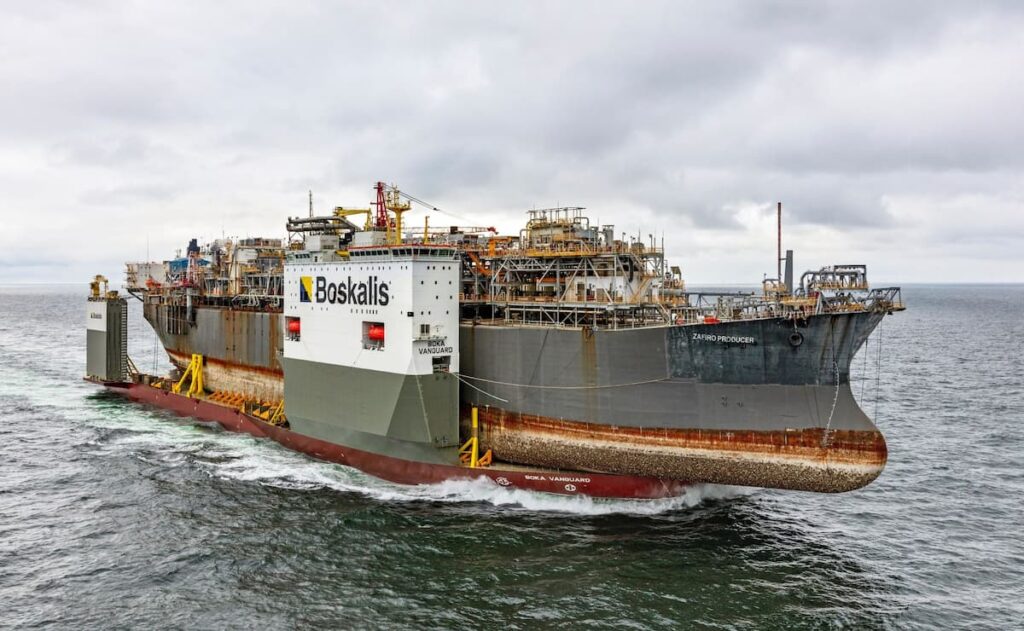
Key features of heavy-lift ships include:
Semi-Submersible Capability: Some heavy-lift vessels can lower their decks below the waterline by taking on water ballast. This allows heavy cargo to be floated onto the deck for transport.
Deck Strength: The decks are fortified to support the tremendous weight of the oversized cargo without sustaining damage.
Types of heavy-lift ships typically fall into the following classifications:
Semi-Submersible Ships: Featuring decks that can go underwater to load and unload cargo.
Dock Ships: These vessels come with a docking system to facilitate cargo handling directly from the water or port.
Open Deck Cargo Ships: They have an open deck space allowing for the carriage of tall or oddly shaped items.
Project Cargo Carriers: These are customized for specific projects, and often equipped with cranes and other lifting equipment.
The capabilities of these ships make them vital assets for industries requiring the transportation of oversized cargo that exceeds standard shipping dimensions.
- Types of Gas Carriers as per IGC Code – April 22, 2025
- Wind-Assisted Propulsion Systems (WAPS): A Game Changer for Maritime Decarbonization – February 6, 2025
- 10 Boat Salvage Yards in California – January 25, 2025



